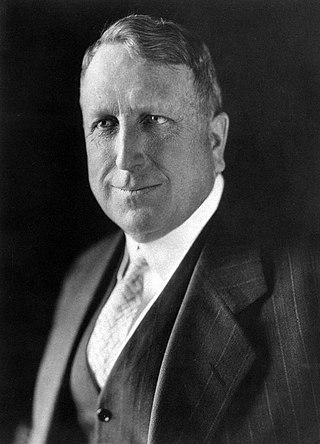
William Randolph Hearst Sr. was an American newspaper publisher, and politician who developed the nation's largest newspaper chain and media company, Hearst Communications. His flamboyant methods of yellow journalism influenced the nation's popular media by emphasizing sensationalism and human interest stories. Hearst entered the publishing business in 1887 with Mitchell Trubitt after being given control of The San Francisco Examiner by his wealthy father, Senator George Hearst.

Mission San Antonio de Padua is a Spanish mission established by the Franciscan order in present-day Monterey County, California, near the present-day town of Jolon. Founded on July 14, 1771, it was the third mission founded in Alta California by Father Presidente Junípero Serra. The mission was the first use of fired tile roofing in Upper California. Today the mission is a parish church of the Diocese of Monterey and is no longer active in the mission work which it was set up to provide.

Hearst Castle, known formally as La Cuesta Encantada, is a historic estate in San Simeon, located on the Central Coast of California. Conceived by William Randolph Hearst, the publishing tycoon, and his architect Julia Morgan, the castle was built between 1919 and 1947. Today, Hearst Castle is a museum open to the public as a California State Park and registered as a National Historic Landmark and California Historical Landmark.
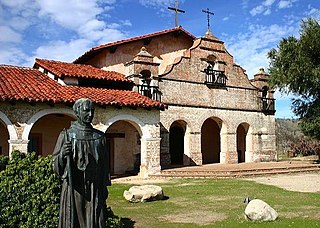
Jolon is a small unincorporated village in southern Monterey County, California. Jolon is located on the San Antonio River Valley, west of Salinas Valley and is entirely surrounded by Fort Hunter Liggett.

Fort Baker is one of the components of California's Golden Gate National Recreation Area. The Fort, which borders the City of Sausalito in Marin County and is connected to San Francisco by the Golden Gate Bridge, served as an Army post until the mid-1990s, when the headquarters of the 91st Division moved to Parks Reserve Forces Training Area. It is located opposite Fort Point at the entrance to the San Francisco Bay.
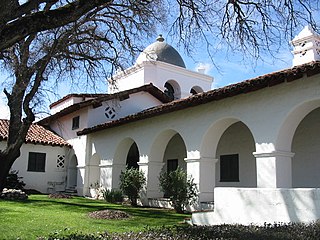
Fort Hunter Liggett is a United States Army post in Jolon, California, in southern Monterey County, California. The fort, named in 1941 after General Hunter Liggett, is primarily used as a training facility, where activities such as field maneuvers and live fire exercises are performed. It is roughly 25 miles northwest of Camp Roberts, California.
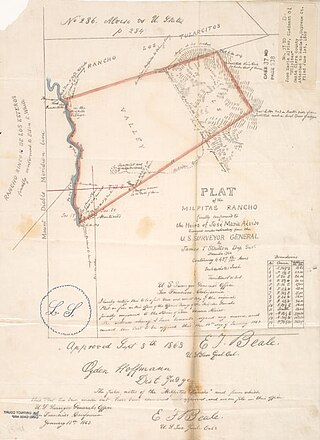
Rancho Milpitas was a 4,458-acre (18.04 km2) Mexican land grant in Santa Clara County, California. The name comes from the Nahuatl "milpan", a term meaning "in the field". Therefore, Milpitas could be translated as "little fields". The grant included what is now the city of Milpitas.

Nacimiento-Fergusson Road is the only road across the Santa Lucia Range on the Central Coast of California, connecting California State Route 1 and the Big Sur coast to U.S. Route 101 and the Salinas Valley. The road is well-paved and maintained over its length, but is winding and has precipitous drops. It is widely regarded as one of the best motorcycling roads in central California due to its ocean views and forest setting.

Asilomar Conference Grounds is a conference center built for the Young Women's Christian Association (YWCA). It is located east of what was known as Moss Beach on the western tip of the Monterey Peninsula in Pacific Grove, California. Between 1913 and 1929 architect Julia Morgan designed and built 16 of the buildings on the property, of which 11 are still standing. In 1956 it became part of the State Division of Beaches and Parks of California's Department of Natural Resources, and Moss Beach was renamed Asilomar State Beach. Asilomar is a derivation of the Spanish phrase asilo al mar, meaning asylum or refuge by the sea. It is the native homeland of the Rumsen Ohlone people.

This is a list of the National Register of Historic Places listings in Monterey County, California.
Rancho Milpitas was a 43,281-acre (175.15 km2) Mexican land grant in present-day Monterey County, California given in 1838 by governor Juan Alvarado to Ygnacio Pastor. The grant encompassed present day Jolon.
A hacienda is an estate in Spain and the former Spanish Empire.
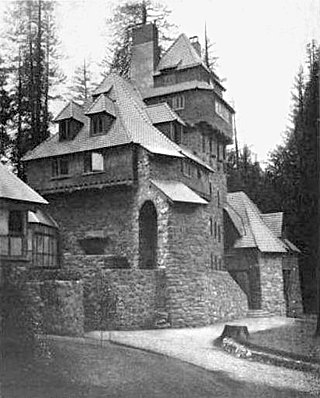
Wyntoon is a private estate in rural Siskiyou County, California, owned by the Hearst Corporation. Architects Willis Polk, Bernard Maybeck and Julia Morgan all designed structures for Wyntoon, beginning in 1899.
Rancho San Miguelito de Trinidad was a 22,136-acre (89.58 km2) Mexican land grant in present day southern Monterey County, California given in 1841 by Governor Juan B. Alvarado to José Rafael Gonzalez. The grant extended along the Nacimiento River and Stony Creek, west of Rancho Milpitas.

The Hearst Ranch is composed of two cattle ranches in central California. The best known is the original Hearst Ranch, which surrounds Hearst Castle and comprises about 80,000 acres (320 km2). George Hearst (1820–1891) bought over 30,000 acres (120 km2) of Rancho Piedra Blanca, an 1840 Mexican land grant, in the late 19th century. He also bought most of Rancho San Simeon, and part of Rancho Santa Rosa, two other adjacent land grants.

Dutton Hotel, Stagecoach Station is located on Jolon Road in Jolon, California. What remains are ruins of an adobe inn that was established in 1849. The Dutton Hotel was a major stagecoach stop on El Camino Real in the late 1880s. The landmark was listed on the National Register of Historic Places on October 14, 1971.

George Hough Dutton was an American merchant and pioneer who came out west during the time of the California gold rush. He was a veteran of the American Civil War who served as a lieutenant in the Union Army. In 1866, Dutton settled in Jolon, California where he purchased the Antonio Ramirez adobe Inn in 1876 and converted it into a two-story hotel and stagecoach station. The hotel is now a landmark, named the Dutton Hotel, Stagecoach Station, which was listed on the National Register of Historic Places on October 14, 1971.
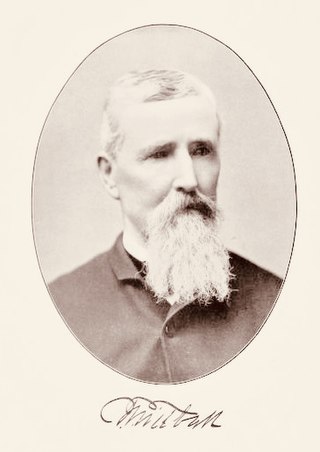
Thomas Theodore Tidball was an American pioneer who came out west during the time of the California gold rush. He was a veteran of the American Civil War who served as a captain in the Union Army. In 1866, Tidball settled in Jolon, California where he and George Dutton purchased the Antonio Ramirez adobe Inn in 1876 and converted it into a two-story hotel and stagecoach station. Tidball went on to establish his own General Store in 1890, which is now the only standing commercial building of Jolon. The Tidball Store is a landmark, which was listed on the National Register of Historic Places on December 12, 1976.
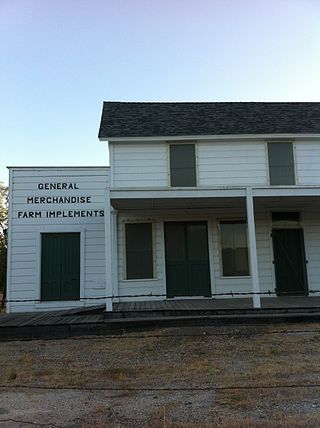
Tidball Store or Jolon General Store is located off Jolon Road in Jolon, California, United States, 1/4 mile south of the Dutton Hotel, Stagecoach Station. The store was constructed by pioneer, Thomas Theodore Tidball, from the remains of an old adobe inn, built in 1868 by Flint & Bixby Stage Lines. Tidball supplied food, clothing, building supplies and other necessities to customers traveling through and to local ranchers and miners. The store was a major stagecoach stop on the old El Camino Real in the late 1880s. The landmark was listed on the National Register of Historic Places on December 12, 1976. It is the only standing commercial building of Jolon, once a major community of southern Monterey County.
José Mario Gil Adobe is a rancho adobe established in 1865 by Don José Maria Gil, a prosperous Monterey rancher of Spanish origin. The Adobe is located on Fort Hunter Liggett, near Jolon, in the southwestern part of Monterey County, California. The rancho adobe exemplifies the architecture style and cattle ranching economy prevalent in the Salinas Valley during the era of cattle ranching, which preceded the transition to vegetable farming dependent on irrigation. The site was officially listed on the National Register of Historic Places on June 7, 1974.





















